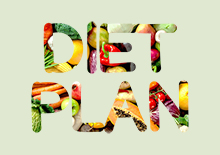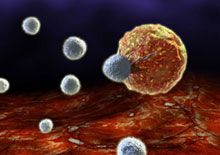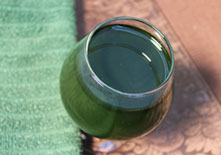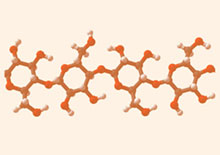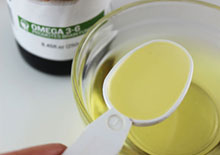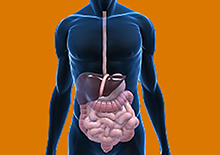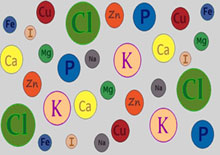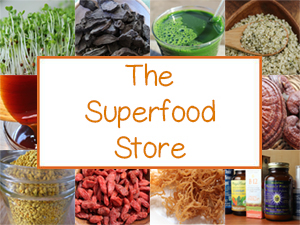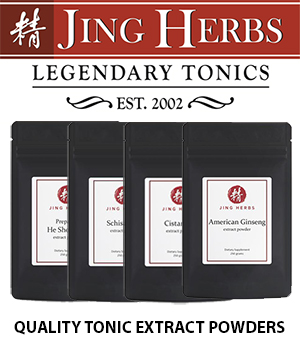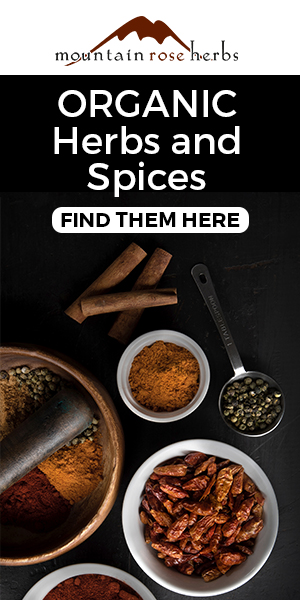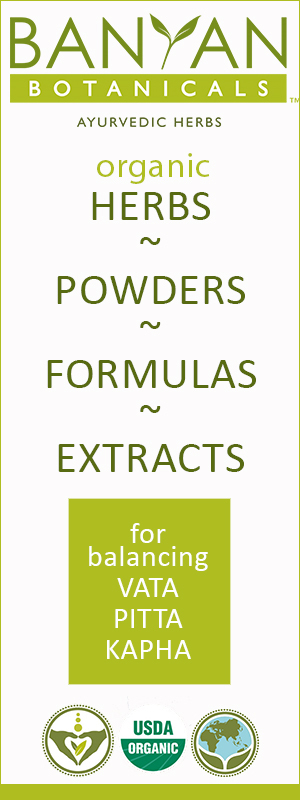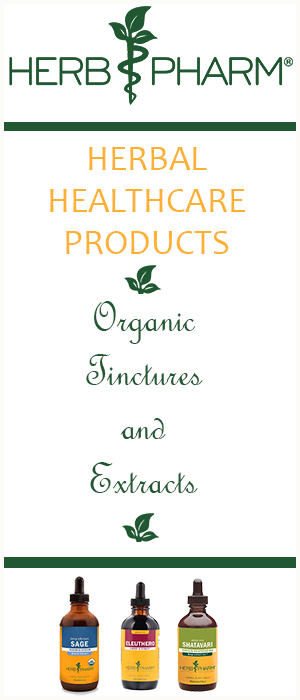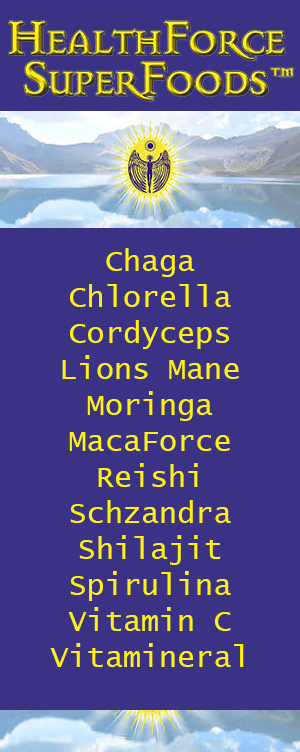What are Antioxidants, Nutritional Role and Health Benefits?
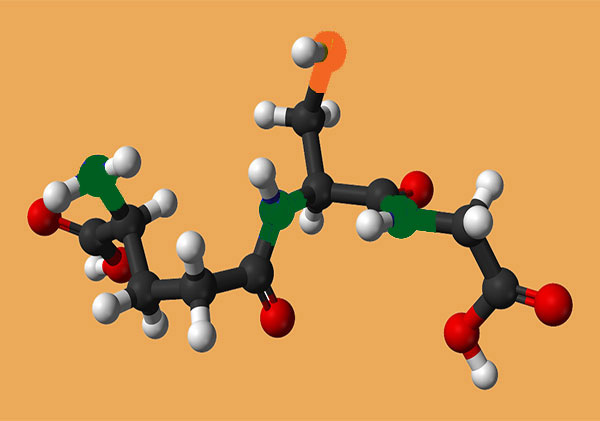
Antioxidants are molecular substances that can be naturally created by the body or acquired through dietary sources and are known to be one of the key factors that control how fast humans age.
Internal production of these micronutrients can decline significantly as we grow older, so it becomes especially important to increase consumption through the foods we eat as we move along in chronological years.
There are many different compounds that act as antioxidants with the most familiar being beta-carotene, other carotenoids, vitamin C, vitamin E, some minerals and amino acids, as well as flavonoids, polyphenols, coenzyme Q10, phytoestrogens, lipoic acid and many more that can be specific to any one superfood or plant-based species.
Scientific evidence has shown the potential benefits of antioxidants for maintaining good health and reducing one's risk of heart disease, degenerative conditions and cancer.
Our body requires a sufficient stream of antioxidants to limit the creation of substances referred to as ROS or reactive oxygen species, the most abundant free radicals in cells. These compounds are a natural byproduct of oxygen metabolism and cellular energy (ATP) production.
ROS is additionally known to accumulate when we are exposed to various external toxins from the atmosphere, water or foods we ingest.
When antioxidant activity is not present, these types of free radicals can proliferate; impeding cellular functions by increasing the risk of oxidation which accelerates tissue and organ damage as well as lowers immune response.
What are Antioxidants Exactly?
In essence antioxidants inhibit the oxidation of other molecules, a chemical reaction that can manifest "free radicals." This effect causes a chain reaction to occur which may damage cellular tissue and DNA structure. Anti "oxidants" are important micronutrients that offer a shielding influence against oxidative stress when exposed to these harmful free radicals.
Typically they are distinguished according to their solubility, being
either: 1) lipid/fat soluble or 2) water soluble. Both versions are
required by the body to help protect the cells which are composed of
both watery fluid as well as fatty cellular membranes. Antioxidants can additionally be classified according to whether they are enzymatic or non-enzymatic in nature as well as by the size of their molecules.
In a 2014 published review discussing the anti-aging aspects of antioxidants, it was stated that "Various cell components are believed to be damaged by oxygen-derived free radicals, of which lipid peroxidation, DNA damage, and protein oxidation are probably the most critical."
What is a Free Radical?
To completely comprehend how internal and dietary antioxidants benefit our health, it is important to understand the concept of free radical formation.
The term "free radical" is one that is commonly associated with and referred to when describing the health enhancing effects of antioxidants. Often viewed as having a destructive impact on the body, free radicals in and of themselves ironically play an significant role in a variety of biological processes, many of which are required for life.
As highly reactive metabolites, it is only when free radicals get out of control that they can scavenge the body and negatively influence the integrity of cells, proteins and DNA material.
They basically cause oxidative stress by grabbing electrons from other cells. Free radicals are therefore any molecules that have unpaired electrons that can readily react with healthy molecules in search of electron replacements, initially destroying their makeup and mutating healthy cells.
This oxidation process occurs naturally, as we mentioned, from energy production and metabolism. Free radicals also tend to increase in number as a response to psychological and emotional stress factors as well as environmental toxins such as radioactive isotopes, heavy metals, pesticides and many pharmaceutical medications.
Oxidation is same process that can be likened to how iron rusts, fruit turns brown or oils go rancid. It is also increased through aerobic exercise, but this effect is often neutralized because exercise, in moderation, also improves the capacity to create antioxidants in the body.
According to Biomed Research International, "The three major stages of free radical reactions are initiation, propagation, and termination. No matter how it is initiated, once formed, the free radicals can propagate themselves indefinitely in the presence of oxygen until those radicals reach a high concentration to react with each other and produce a nonradical species." (Source)
Free Radical Theory of Aging
The "Free Radical Theory of Aging" was first introduced by biogerontologist Dr. Denham Harman, who is known as the "father of the free radical theory of aging." In the 1950's, Harman was able to show the extension of life expectancy with a number of antioxidant substances.
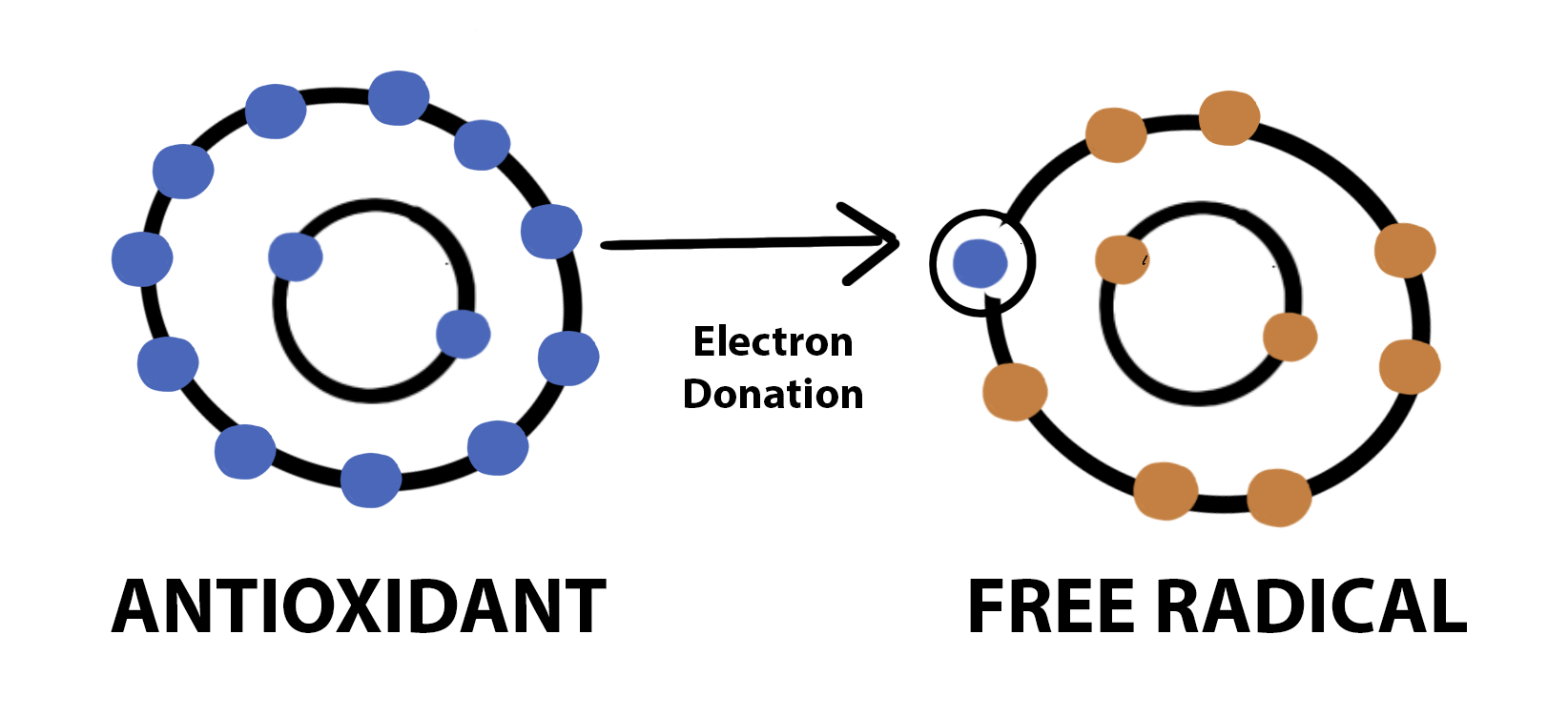
How Do Antioxidants Combat Free Radicals?
Antioxidants donate electrons and sacrifice their own to "feed" free radicals and prevent their damaging effects. They are able to do this while still retaining a "non-free radical" structure. These molecules are essentially nature's backup system to safeguard against the negative impacts that free radicals, either from internal or external sources, can have on the body over time.
When you have a constant influx of these dietary nutrients, you assist in the body's self-induced free radical defense mechanism.
In addition, because internal antioxidant formation is known to slow down with the aging process it is important to get them through dietary sources to protect against age-related conditions like macular degeneration, cardiovascular disease, cognitive impairment and premature aging.
What Happened to the ORAC Value Scoring?
The US Department of Agriculture (USDA) once created a scale for measuring the antioxidants in foods and their ability to combat free radicals. This was called the ORAC scale, or Oxygen Radical Absorbance Capacity. However, since 2012 they withdrew ORAC values as an antioxidant measurement stating on their website that, "We know now that antioxidant molecules in food have a wide range of functions, many of which are unrelated to the ability to absorb free radicals. For these reasons the ORAC table, previously available on this website has been withdrawn."
In addition, another reason for eliminating the ORAC scale was due to the fact that it was being largely manipulated as a marketing device as stated on the USDA website: "ORAC values are routinely misused by food and dietary supplement manufacturing companies to promote their products and by consumers to guide their food and dietary supplement choices."
Types of Antioxidants
Enzymatic Antioxidants
These are bodily created antioxidant substances that protect against oxidation through a network of enzymes and their interaction with cells. They require certain trace minerals, amino acids or "antioxidant nutrients" such as selenium, zinc, iron, copper, manganese, cysteine, glycine and glutamate. Antioxidant enzymes are activated by these and other dietary nutrients but are most efficiently produced within the body itself, rather than absorbed directly through food sources. (Source)
Primary Enzymatic Antioxidants Include:
- Superoxide dismutase
- Catalase
- Glutathione peroxidase
- Glutathione reductase
Non-Enzymatic Antioxidants
These are antioxidant types that primarily come from the foods we consume. They help to interrupt free radical chain reactions, supporting the enzymatic antioxidants and inhibit their depletion.
Non-Enzymatic Antioxidants Include:
- Vitamin E
- Vitamin C
- Carotenoids (beta-carotene, lutein and zeaxanthin)
- CoQ10
- Lipoic acid
- ALA
- Polyphenols
- Plant-Specific Varieties
Consuming Antioxidants Through Diet
The best ways to increase anti "oxidants" and reduce the impacts of oxidative stress is through nutrition, natural supplementation and a well-balanced diet regimen. Many health experts agree that it is best to consume a variety of different antioxidant-rich food sources for greatest health benefits.
Because there are different types of antioxidants that offer different protective effects, consuming a wide spectrum of these micronutrients ensures full protection against free radical damage.
With the exception of endurance athletes, "Mixed diets high in antioxidants may be safer than antioxidant supplementation and possibly confer greater benefits" as reported in the publication Antioxidants in Sport Nutrition. (Source)
In the words of Dr. L. Packer, author of The Antioxidant Miracle:
"To keep our anti oxidant network strong and effective, we must constantly replenish the anti-oxidants we lose every second of every day as we carry on our normal activities. What we eat can make a huge difference in our ability to maintain the anti-oxidant advantage, and to keep our bodies and minds functioning at optimal levels."
Boosting to the Immune System
Consuming dietary antioxidants can significantly increase immune health and our systems response to pathogens we are all invariably exposed to through food, water and atmospheric sources.
It is helpful for long-term wellness to do everything we can do to boost our immune system and shield ourselves against the constant influx of toxic substances, from plastics and pesticides to radiation and heavy metals.
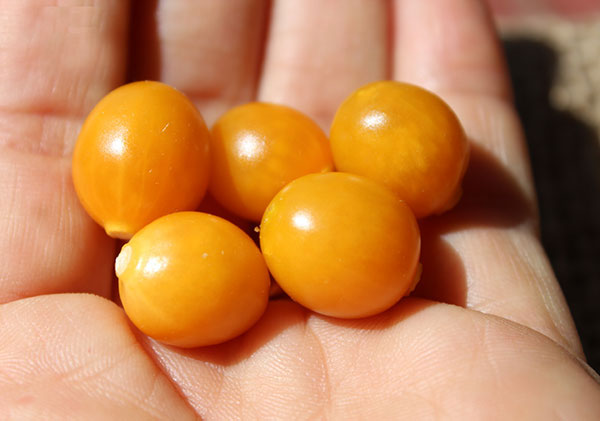
Top Antioxidant-Rich Foods
Superfruit Varieties
Super fruits, or also spelled "super fruits", are brightly colored foods that contain concentrated quantities of non-enzymatic antioxidants. This includes vitamin C, vitamin E and an assortment of carotenoid pigments highly beneficial for healthy immune functions and specifically nourishing to the eyes and skin.
High quality grocery market fruits, especially berries, may also have good amounts of antioxidant content. True super fruit varieties, however, contain condensed doses of these nutriments, which are particularly helpful for most people living in today's world.
Many of these types are found in exotic or remote locations and often not available as a fresh fruit, but as a dried version or powdered concentrate.
Superfruits are known to have an intertwining spectrum of antioxidant nutrients helpful for increasing the production of the enzymatic types such as glutathione, superoxide dismutase and catalase.
Some of these fruits include:
- acai berry
- amla berry
- baobab fruit
- camu camu
- goji berries
- golden berry
- mangosteen
- maqui berries
- noni fruit
- schizandra berries
Chlorophyll-Rich Foods
Vitamin and mineral potent dietary chlorophyll incorporated on a regular basis through the consumption of green drinks, green foods and microalgaes also encourages biological enzymatic production. Moreover chlorophyll molecules are rich sources of water soluble and lipid soluble plant pigments such as the carotenoids: beta-carotene, lutein and zeaxanthin, in addition to various phenolic substances and plant-specific nutrients, like the phycocyanin found in blue green algae.
The intake of chlorophyll-rich foods and concentrated powders offer shielding effects against free radical damaged caused by radiation and excessive UV light exposure.
Some of these foods, drinks and powdered microalgaes include:
- green leafy vegetables
- green juices
- chlorella
- seaweeds
- wild edible greens
- sprouts and microgreens
- blue green algae
- spirulina
- marine phytoplankton
- green powders
Other Antioxidant Potent Superfoods
Many of our top superfoods either provide direct dietary sources or indirectly increase the production of enzymatic metabolites SOD, catalase or glutathione.
This list includes many of the medicinal mushrooms, herbs and plant based superfoods such as:
- chaga
- reishi
- turmeric
- pine pollen
- hemp seeds
- cacao
- aloe
- ginkgo biloba
- bee pollen
- ashwagandha
Fermented Foods and Drinks
Fermented foods are probiotic-rich foods and drinks that act as digestive aids so that you can nutritionally absorb and utilize the antioxidants consumed through the diet. Cultured ferments also assist in the increase of enzymatic antioxidant levels and the nutrients needed to activate them.
Some of these drinks and foods you may wish to add to the diet include:
- sauerkraut
- kefir
- tempeh
- kombucha
- miso
- rejuvelac
Natural Supplements
Sometimes additional supplementation may be helpful. We always recommend consuming high quality whole food-based supplements as opposed to synthesized or isolated extracts. Some minerals can be taken in tablet form, but are also available in easily absorbable water soluble solutions.
We do not recommend using synthetic antioxidant supplements which can have a damaging influence on the body. In a 2014 published review it was stated that "Antioxidant supplements do not possess preventive effects and may be harmful with unwanted consequences to our health, especially in well-nourished populations. The optimal source of antioxidants seems to come from our diet, not from antioxidant supplements in pills or tablets."
Natural high quality plant-based antioxidant supplements are available like:
- coenzyme Q10 (ubiquinol)
- vitamin E
- resveratrol
grape seed extract
omega-3 oils (ALA)
food-based vitamin C
Raw Fruits and Vegetables
A diet filled with plenty of brightly colored raw fruits and vegetables can significantly help to increase dietary and biologically created antioxidant levels.
Some of these may include:
- blueberries
- tomatoes
- kale
- carrots
- olives
- garlic
- avocados
- parsley
- oranges
- beets
- strawberries
- red cabbage
Precautions:
We do not recommend consuming high doses of antioxidant supplements, especially synthetic varieties. It is best to get these micronutrients from the wide range of dietary whole plant-based sources for greatest health enhancing effects.
